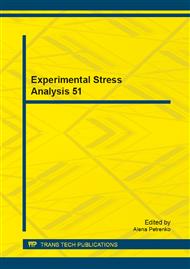p.341
p.347
p.353
p.359
p.371
p.379
p.387
p.396
p.406
High Temperature Composite of Aluminous Cement with Addition of Metakaolin and Ground Bricks Dust
Abstract:
The following article deals with the study of mechanical properties of aluminous cement composites exposure to high temperatures. The newly designed mixtures that resist the action of high temperatures 1000 °C find their application in various fields of industrial production or in the form of fire wall for protection bearing structures. All the mechanical properties such as compressive strength and tensile strength in bending were measured on samples 160x40x40 mm. These samples were exposed to temperatures 600 °C and 1000 °C and one group of samples was reference and stayed in laboratory condition. Aluminous cement unlike the common Portland cement keeps sufficient strength even after high temperature exposure. For ensuring required ductility the basalt fibers were added to the mixture. In an effort to use of secondary raw materials as a replacement for cement as well as a suitable binder was used metakaolin and ground brick dust. Very convenient characteristics of these components are their latent hydraulic potential that makes interesting hydration products.
Info:
Periodical:
Pages:
406-411
Citation:
Online since:
December 2013
Authors:
Price:
Сopyright:
© 2014 Trans Tech Publications Ltd. All Rights Reserved
Share:
Citation:


